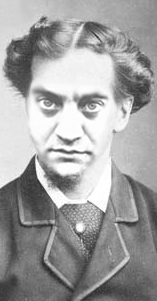What is a Palmeresque??
Shortly after the tragic death and premature death of Amanda Palmer, (the mysterious nature of which served only to add considerably to her previously acquired mystique), stories, poems and stream-of-consciousness writings began to appear, first in blogs and chat-rooms, then in other forms of internet based viral distribution formats such as auto-forwarded emails and Facebook applications etc.. These have come to be known as “Palmeresques”.
There are a number of specific qualities that distinguish a Palmeresque from a traditional eulogy. The OED defines a eulogy as “a speech or writing in commendation of the qualities, etc., of a person or thing”. The Palmeresque steers clear of praise, focussing instead upon more imaginative responses to Miss Palmer’s death. Where a eulogy explicitly looks back over the life of the deceased, the Palmeresque looks forward from the point of death to contemplate either the nature, or further ramifications of her demise. Among the more frequently employed forms are short stories and poems, although letters and stream-of-consciousness explorations are not uncommon. Many seem to be fragmentary, although this could in part be due to the nature of the internet as a medium: any piece of writing of substantial length is inevitably split between online pages and hence when they are copied from one site to another it is not uncommon for parts to go missing, and pages sometimes get deleted leaving only the opening portions available – although in some cases it is impossible to tell whether or not the original may have only been a fragment itself, as is suspected in many examples. One thing that they all share is anonymity. This is particularly interesting as the traditional eulogy, in the popular form of the 17th century, was as much about emphasising a connection between the author and the deceased, thus to bathe in reflected glory, as it was about praise for the dead.
It is this renouncing of authorship that first caught the attention of theoretical psychologist Dr. Stanley Quince whilst conducting a study of motivations towards anonymity, focussing specifically upon the late 20th century. In his colourful 2007 paper Withdrawings from Authorship – the Internet and the Self he offers the following paragraph in speculative explanation:
“...The self-named phenomena of the “Palmeresque” clearly demonstrates this tendency towards rebellion through anonymity in the age of the individual, in this case being an artistic expression, more specifically involving the art of interature, that brand of literature which has evolved exclusively to service the many unique requirements of the internet. Following the death of Amanda Palmer, a performance artist of moderate success, her uniquely loyal and creative following (a direct result of the unusually theatrical, generous and over-all constructive expression of the “don’t give a damn” attitude she presented through her music and media profile) intuitively came together at some point to symbiotically evolve a set of rules through which her memory might be celebrated. In this particular context the sense of community might easily have been shattered by any expression of individual ego through claims of authorship, and it is indeed a testament to the general emotional sensitivity of her fans that a consensus of anonymity seems to have been brought about so seamlessly. Finally, by giving a name to their shared aspiration, in this case being the Palmeresque, the communal ownership of the medium is asserted and it can be formalised...”
Whatever may be the motivations or inspirations behind the development of the Palmeresque, there is no denying the enthusiasm with which it has been taken up. To date, (September 2008), 6743 distinct and identifiable examples have been catalogued, with a further 1260 being classed as quasi-Palmeresques. By the beginning of 2007 the word itself began to be used outside the context of its original reference to Amanda Palmer. The first known printed use of it in this context comes from a local East London youth film magazine called Visioning! In a brief obituary for Ingmar Bergman in their August 2007 edition John Biggs describes the filmmaker (in typically semi-colloquial prose) as “a diamond geezer well worthy of many a Palmeresque”. Since then its usage has spread beyond youth culture magazines into the trendier Arts journals, and an entry has now been prepared for the 2010 edition of Butler’s Modern English Dictionary, although I and many others would question the accuracy of the proposed definition:
Palmeresque [noun]. A piece or fragment of memorial writing, usually fictionalised, which refrains from praise or direct contemplation of the life passed.



